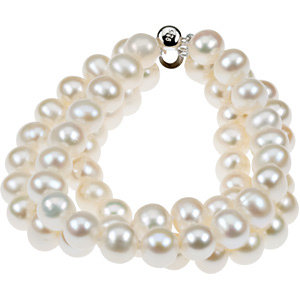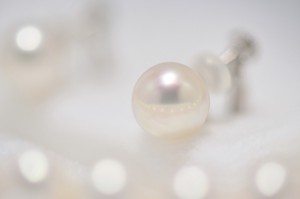Unlike the other gemstones, pearls are different. When a foreign object, such as a grain of sand, accidently found in an oyster or mollusk, a pearl is formed. They can take months to a few years to form, contrary to the years’ stones like diamonds take. The opaque gems come in colors like white, off white, black, grey, with overtones of pink, purple and green. Possible shapes are round, drop and baroque.
Formation of Pearls
Pearls are created within mollusks as a reaction to a foreign substance within its body. The irritant is isolated by coating it in plates of aragonite, a crystalized calcium carbonate. Aragonite pieces sit on top of one another in staggered layers akin to bricks. Conchiolin, a natural glue, is the mortar that holds them together. The nacre coating is thick enough to resist damage.

Pearl Properties
The light travels through the jewel’s nacre once it hits a
Pearl. The light is caused to bend around the plates because of the way aragonite is stacked. Orient is white light that separates into its component colors causing iridescence. Light, referred to as luster, can be soft or mirror bright, depending on the quality of nacre.
Pearl Quality
Natural and cultured pearls have a broad range of hues. Yellow, orange and pink are warm hues and blue, green and violet are cool hues. There are a wide range of tones from light to dark in pearls. The color of pearls consists of three factors- hue, tone and saturation. The colors can be muted representing a range of subtle hues.

Pearl Size
Pearls are measured in millimeters. They can be smaller than a millimeter as in the case of tiny seed pearls or big as twenty millimeters for big sea pearl. Like diamonds, pearls are rare and precious. Are you looking for pearls to make something out of them like a necklace or a pendant? Sachs Jewelers offers diamond engagement and wedding rings, pendants, earrings and bracelets. Head on over to Sachs Jewelers. Visit
www.sachsjewlers.com or call 508-792-2300.



